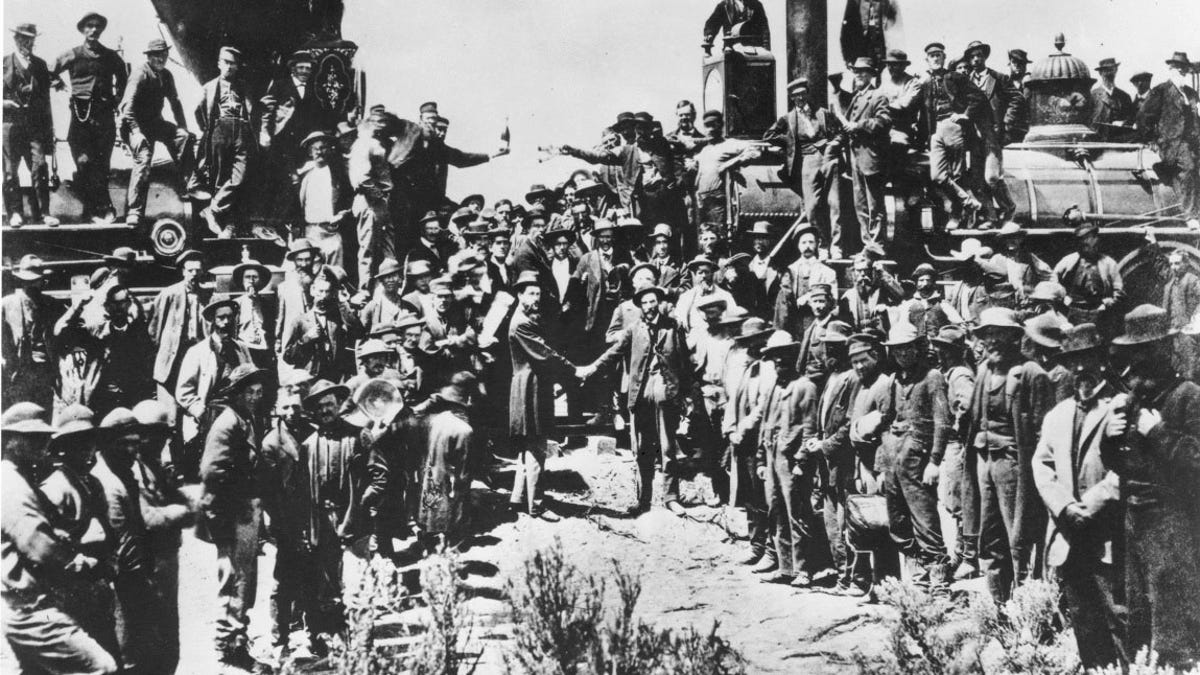The event that really 'won' the west
Recalling the "golden spike" that connected a continent, a moment that was as transformational to 19th century America as the Internet is to early 21st century America.

In our increasingly post-industrialized, mobile cyber-centric world, let's pause for a moment to recall an event that had more of a transformational impact on 19th century America than the Internet had nearly a century and a half later. A
On May 10, 1869, the Union Pacific and Central Pacific railroads made transcontinental travel possible for the first time in North America when the "golden spike" was driven connecting the two rail lines at Promontory, Utah. It's no exaggeration to say that in one fell swoop, the world had grown immensely smaller with the amount of time required to move people and freight passage from East Coast to West Coast got reduced from months to just six days. In doing so, the door to the industrialization of great reaches of this still-young country had swung open and the United States was forever changed.

